
Fundamentals
The West African Heritage, within the living library of Roothea, represents far more than a geographical designation; it is a profound declaration, a resonant chord struck from the very genesis of human artistry and communal existence. This inheritance, particularly when viewed through the lens of textured hair, unfolds as a foundational explanation of identity, resilience, and the intricate dance between nature and human ingenuity. It is a historical current, flowing from ancient riverbanks to contemporary crowns, carrying the indelible mark of traditions passed through generations. This initial clarification serves as an invitation to understand the deep cultural significance embedded within every coil and curl, a tangible connection to ancestral wisdom.
At its most fundamental, the West African Heritage is a designation encompassing the diverse cultural, historical, and spiritual legacies of the myriad ethnic groups residing in the western regions of the African continent. This broad delineation covers a spectrum of societies, each with unique customs, languages, and spiritual systems, yet often bound by shared cosmological perspectives and communal values. Within this rich context, hair, especially textured hair, holds a distinctive and revered status.
It was, and in many communities remains, a potent symbol of social standing, spiritual connection, familial lineage, and personal expression. The way hair was groomed, adorned, and protected reflected a sophisticated understanding of its significance, acting as a living chronicle of individual and collective journeys.
The West African Heritage is a foundational declaration of identity, resilience, and the intricate dance between nature and human ingenuity, profoundly expressed through textured hair.
The earliest forms of hair care in West Africa were intrinsically linked to the environment and the deep knowledge of local flora. Ancestral communities understood the properties of plants, oils, and clays, transforming them into preparations that cleansed, conditioned, and protected hair. These practices were not merely cosmetic; they were deeply integrated into daily life, often forming part of sacred rituals, rites of passage, and communal gatherings.
The very act of styling hair became a moment of bonding, a transfer of knowledge from elder to youth, reinforcing societal structures and cultural continuity. This ancient understanding of hair’s biological needs, combined with its cultural designation, forms the bedrock of West African Heritage in relation to textured hair.
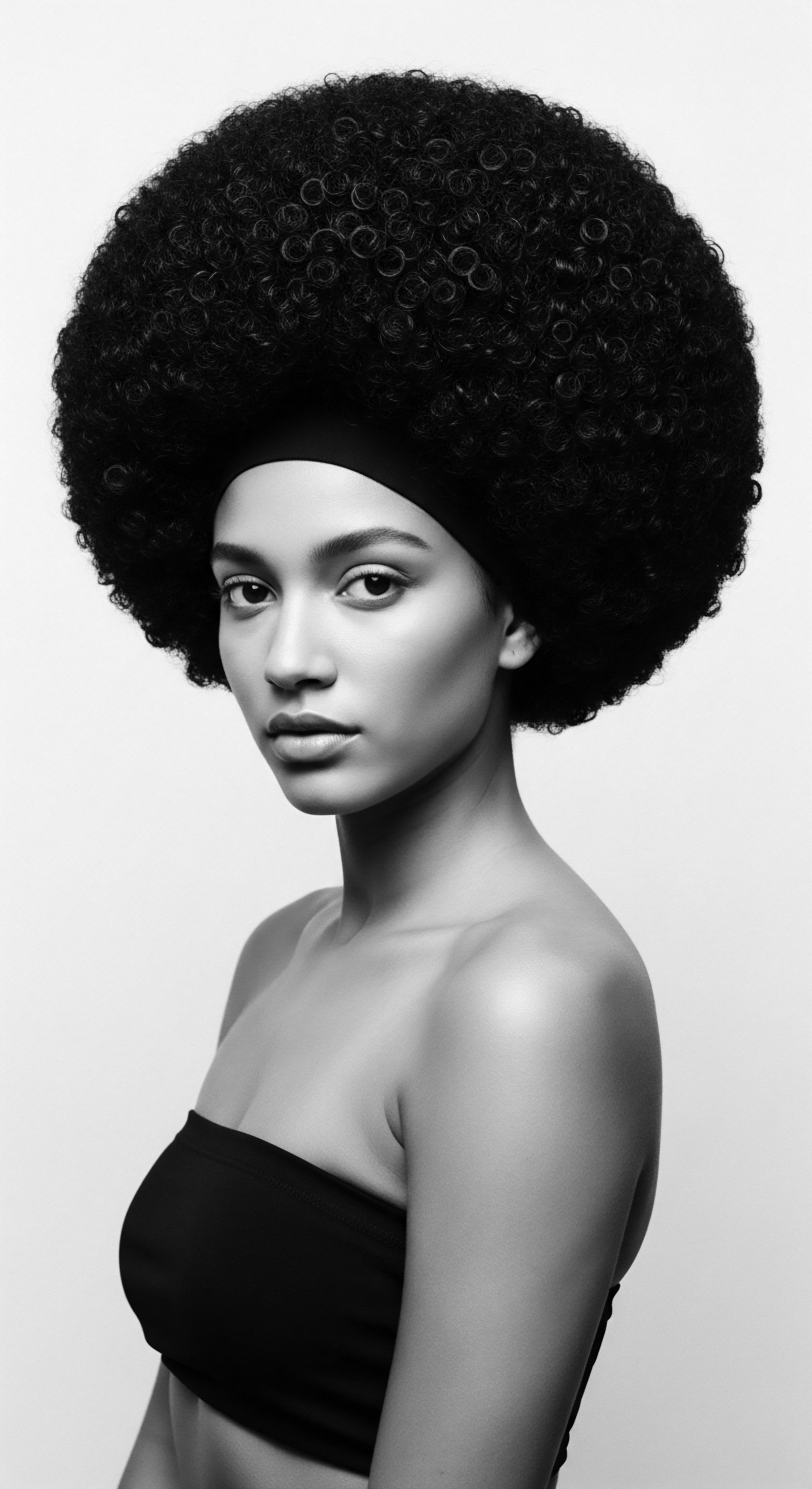
Ancient Roots of Hair Care
From the dawn of civilization in West Africa, the practice of hair care was intertwined with survival and spiritual well-being. The climate, often arid or humid, necessitated protective styles and nourishing treatments to maintain hair health. Early communities developed a deep empirical understanding of botanical properties. For instance, the use of shea butter (Vitellaria paradoxa), extracted from the nuts of the shea tree, was widespread across the Sahelian belt.
Its rich emollient properties provided a natural shield against the harsh sun and dry winds, acting as a powerful moisturizer and sealant for textured strands. This traditional use, centuries before modern cosmetic science, underscores an inherent knowledge of hair’s elemental biology and its environmental needs.
Beyond shea, other natural elements played a vital role. Clays, rich in minerals, were employed for cleansing and detoxification, while various herbs and barks were infused to create rinses that promoted growth and scalp health. The meticulous preparation of these natural ingredients speaks to a reverence for the earth’s bounty and a commitment to holistic well-being.
These practices were often communal, fostering a sense of shared responsibility for health and beauty within the village or family unit. The legacy of these early applications of natural resources to hair care forms a significant component of the West African Heritage.
- Shea Butter ❉ Revered for its moisturizing and protective qualities, used across West Africa.
- Chebe Powder ❉ Originating from Chad, a blend of herbs known for strengthening hair and minimizing breakage.
- African Black Soap ❉ Traditionally made from plantain skins, cocoa pods, and shea tree bark, a gentle cleanser for hair and scalp.
The tools employed in these ancient rituals were often crafted from natural materials – wood, bone, or gourds – and were imbued with symbolic meaning. Combs, often intricately carved, were not merely functional items but extensions of cultural artistry, sometimes passed down through generations. These implements facilitated the creation of complex styles, each carrying its own narrative and communal import. The meticulous nature of these early hair practices highlights a deep respect for the hair as a living extension of the self, a canvas for cultural expression, and a repository of ancestral memory.
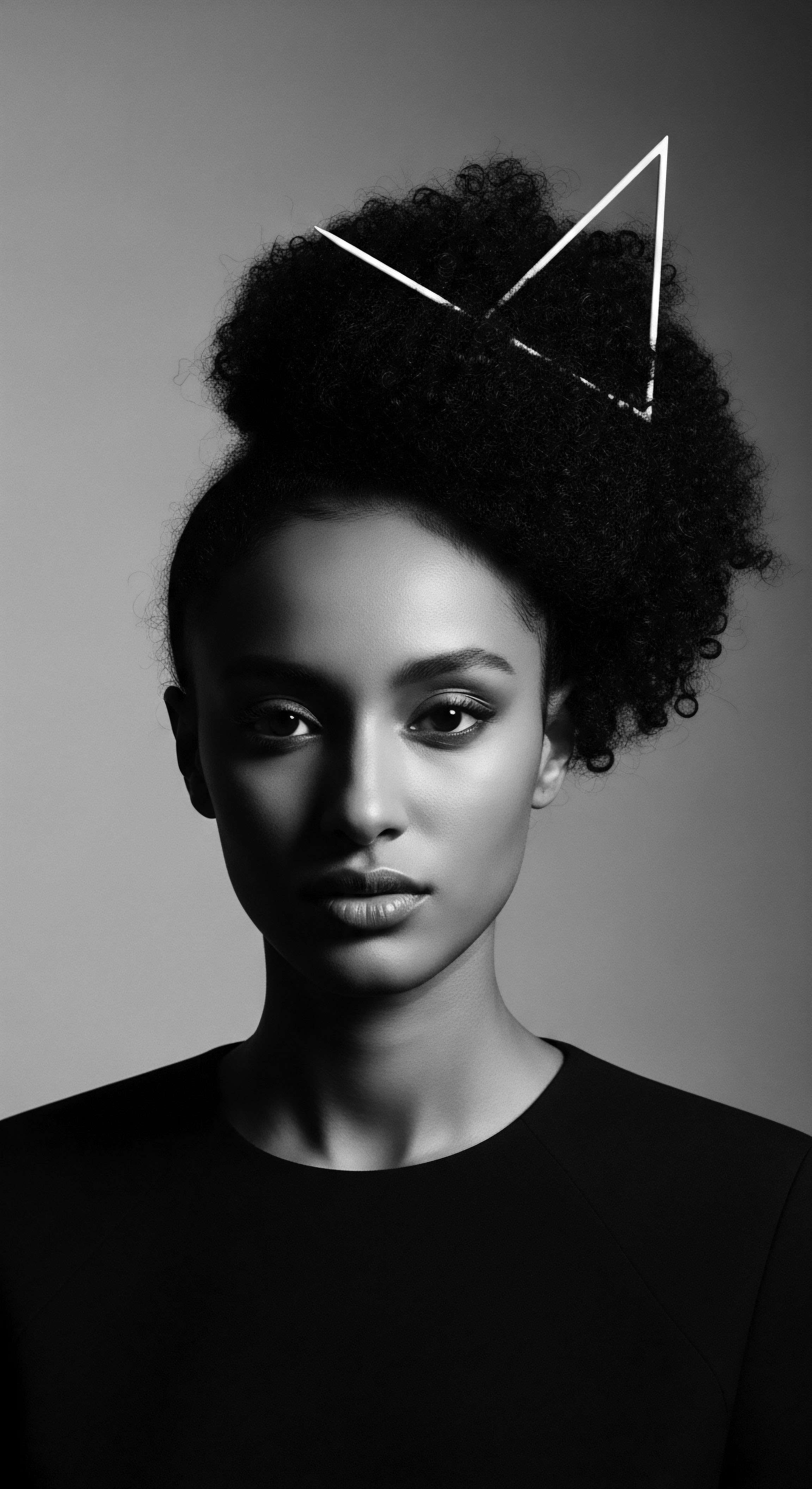
Intermediate
Moving beyond the foundational understanding, the West African Heritage, in its intermediate interpretation, reveals itself as a dynamic cultural current, a testament to the adaptive spirit of its peoples and the enduring significance of textured hair as a communicative medium. This section delves into the evolving sense and implication of hair practices, tracing their journey from ancient ceremonial functions to their role in voicing identity amidst profound historical shifts. The focus here is on the deliberate choices and societal structures that shaped hair aesthetics and care, presenting a more intricate delineation of its meaning within various West African societies.
Hair in West African cultures was a sophisticated visual language, a powerful form of non-verbal communication. The styling of hair often served as a visual identifier, signaling a person’s age, marital status, social rank, religious affiliation, and even their ethnic group. A young woman’s braids might signify her readiness for marriage, while an elder’s elaborate coiffure could convey wisdom and authority. These stylistic statements were not static; they changed with life stages, significant events, and evolving social dynamics.
This constant reinterpretation of hair’s meaning speaks to a living, breathing cultural archive, where each style was a sentence in a collective story. The communal aspect of hair dressing reinforced these social codes, as women often gathered to braid each other’s hair, sharing stories, knowledge, and reinforcing social bonds.
Hair in West African cultures functioned as a sophisticated visual language, communicating identity, status, and spiritual connection through intricate styles.
The artistry involved in these traditional styles was immense, demanding skill, patience, and a deep understanding of hair’s unique properties. Braiding, twisting, coiling, and knotting techniques were perfected over centuries, transforming textured hair into architectural marvels. These techniques were not arbitrary; they often mirrored patterns found in nature, geometry, or spiritual iconography, further deepening the cultural connotation of each style.
The preparation of hair before styling was also a ritual, involving specific cleansing and oiling practices that both nourished the hair and prepared it for its symbolic transformation. This careful preparation and execution underscores the high value placed on hair as a cultural artifact and a personal adornment.
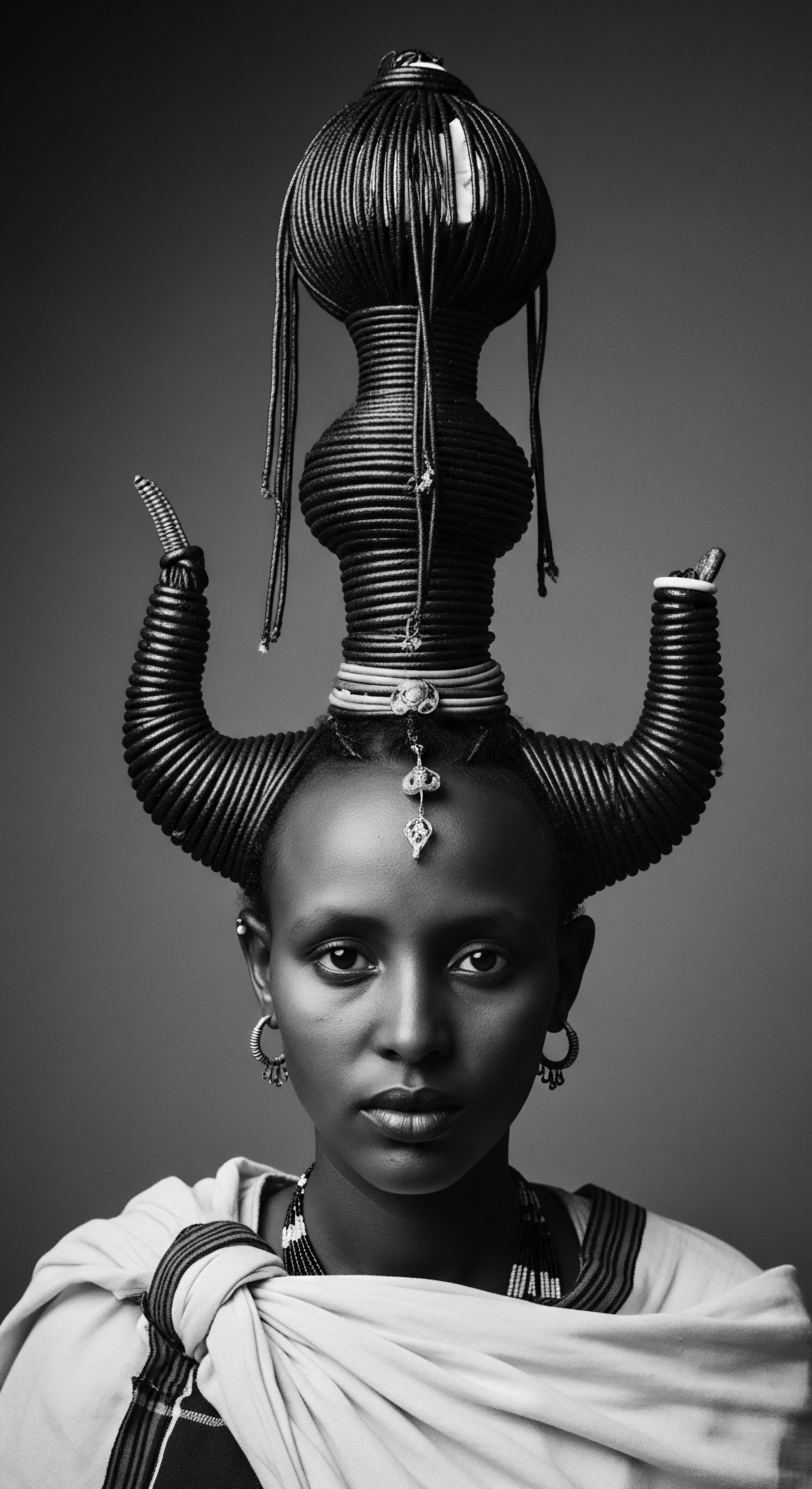
Hair as a Chronicle of Identity and Resilience
The historical journey of West African peoples, particularly through the transatlantic slave trade, brought about profound shifts, yet the cultural significance of hair persisted, adapting and transforming as a testament to resilience. In the face of brutal dehumanization, hair became a silent, yet potent, symbol of resistance and a repository of cultural memory. Enslaved Africans, stripped of many aspects of their identity, often maintained traditional hair practices covertly, using them to preserve connections to their ancestral lands and communal bonds. The simple act of braiding hair, a practice deeply rooted in West African heritage, transformed into a quiet act of defiance, a way to reclaim agency and maintain a link to their origins.
Consider the ingenuity born of necessity ❉ historical accounts and oral traditions speak of how enslaved people would sometimes braid seeds into their hair before forced migrations, carrying the literal seeds of their future survival and connection to the earth. This specific historical example, though sometimes debated in its exact implementation, powerfully illuminates the West African Heritage’s connection to ancestral practices and the ingenuity of Black hair experiences (Byrd & Tharps, 2014). It exemplifies how hair, beyond being an aesthetic feature, became a vessel for hope, a silent carrier of sustenance and memory, and a means of cultural preservation in the direst circumstances. The implication here extends beyond mere survival; it speaks to the profound spiritual and cultural import attributed to hair, transforming it into a tool of endurance.
| Pre-Colonial Era (Ancestral Wisdom) Deep knowledge of indigenous botanicals for hair health and styling. |
| Colonial & Post-Colonial Eras (Adaptation & Resilience) Introduction of new ingredients and tools, sometimes displacing traditional ones. |
| Pre-Colonial Era (Ancestral Wisdom) Hair styles signifying social status, age, marital status, and spiritual beliefs. |
| Colonial & Post-Colonial Eras (Adaptation & Resilience) Hair as a symbol of resistance against oppressive beauty standards. |
| Pre-Colonial Era (Ancestral Wisdom) Communal hair dressing as a social bonding ritual. |
| Colonial & Post-Colonial Eras (Adaptation & Resilience) Formation of new hair care communities in diaspora, adapting traditions. |
| Pre-Colonial Era (Ancestral Wisdom) Hair tools crafted from natural materials, imbued with cultural meaning. |
| Colonial & Post-Colonial Eras (Adaptation & Resilience) Innovation in protective styling to preserve hair health amidst new challenges. |
| Pre-Colonial Era (Ancestral Wisdom) The enduring spirit of West African Heritage consistently adapted its hair traditions to sustain identity and well-being across changing historical landscapes. |
This period also saw the emergence of new hair expressions that blended traditional West African techniques with the realities of diasporic life. The development of styles like cornrows (a term with historical roots in agricultural fields, referencing rows of crops) became a powerful visual statement, a subtle yet profound affirmation of cultural identity. These styles were not just about aesthetics; they were about survival, communication, and maintaining a connection to a shared past.
The cultural meaning of hair, therefore, did not diminish but rather deepened, becoming a profound symbol of continuity and self-determination. The West African Heritage, through this lens, is a dynamic story of cultural persistence.
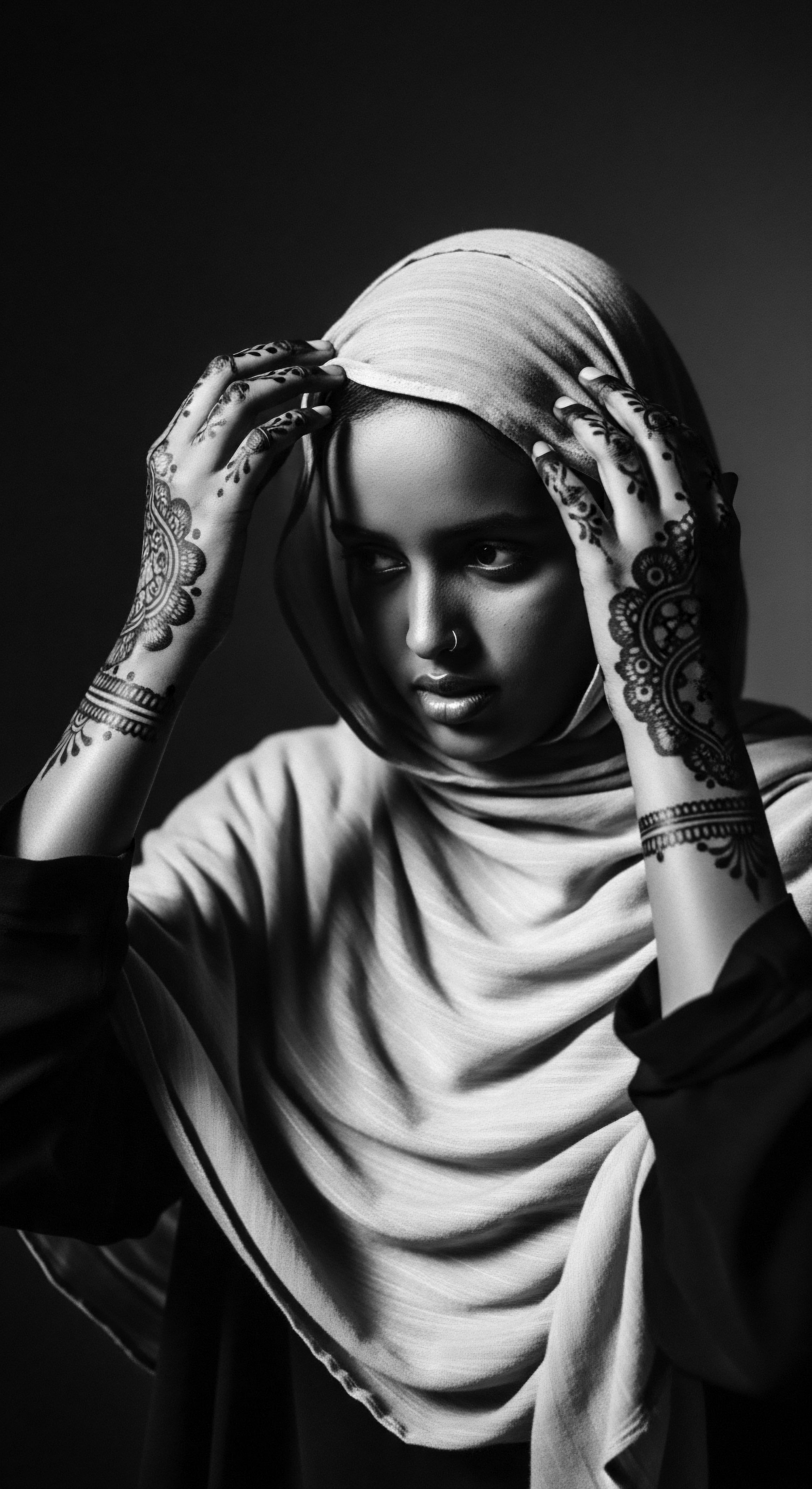
Academic
The West African Heritage, from an academic vantage point, constitutes a complex epistemic field, demanding rigorous scholarly inquiry into its multifaceted dimensions, particularly as they pertain to the anthropology of appearance, ethnobotany, and the sociology of identity. This expert-level interpretation moves beyond descriptive accounts to provide a critical elucidation of its enduring significance, dissecting the intricate interconnections between ancestral practices, socio-political landscapes, and the profound semiotics of textured hair. The meaning here is not merely observed; it is analytically constructed, revealing the deep historical currents and their continuous flow into contemporary Black and mixed-race hair experiences.
At its most granular, the West African Heritage, as it relates to hair, is a sophisticated system of knowledge, practice, and symbolic representation. It represents a systematic body of ancestral wisdom regarding the biology, aesthetics, and social functions of hair, often passed down through oral traditions and embodied practices. This designation transcends a simple collection of styles or ingredients; it encompasses a comprehensive understanding of the scalp as a spiritual portal, the hair strand as a conduit for energy, and the collective head as a site of profound communal and individual power.
The interpretation of hair in this context is inherently holistic, integrating physical care with spiritual reverence and social cohesion. This deep, original exploration necessitates a departure from superficial analyses, prompting an examination of the ‘why’ behind traditional practices, revealing their profound philosophical underpinnings.
Academically, West African Heritage in relation to hair is a sophisticated system of knowledge, practice, and symbolic representation, deeply integrated with spiritual and social structures.
One compelling area for academic examination lies in the intricate Yoruba hair traditions of Southwestern Nigeria and parts of Benin and Togo. For the Yoruba, hair was not merely an appendage but a living, growing extension of the ori (head), which is considered the seat of a person’s destiny, consciousness, and spiritual essence. The meticulous care and styling of hair, therefore, were direct acts of engaging with one’s destiny and honoring the ancestral spirits. Styles like Shuku (basket-shaped braids atop the head) or Kiko (knots and twists often arranged in geometric patterns) were not arbitrary aesthetic choices.
They were deliberate, culturally coded statements, conveying specific information about the wearer’s lineage, marital status, age, social standing, and even their religious affiliations (Thompson, 1971). For instance, specific coiffures might be reserved for priestesses of certain orishas (deities), while others denoted a new bride or a woman who had recently given birth. This rigorous classification and symbolic density of Yoruba hair practices offer a powerful illustration of the West African Heritage’s profound connection to identity and ancestral practices.
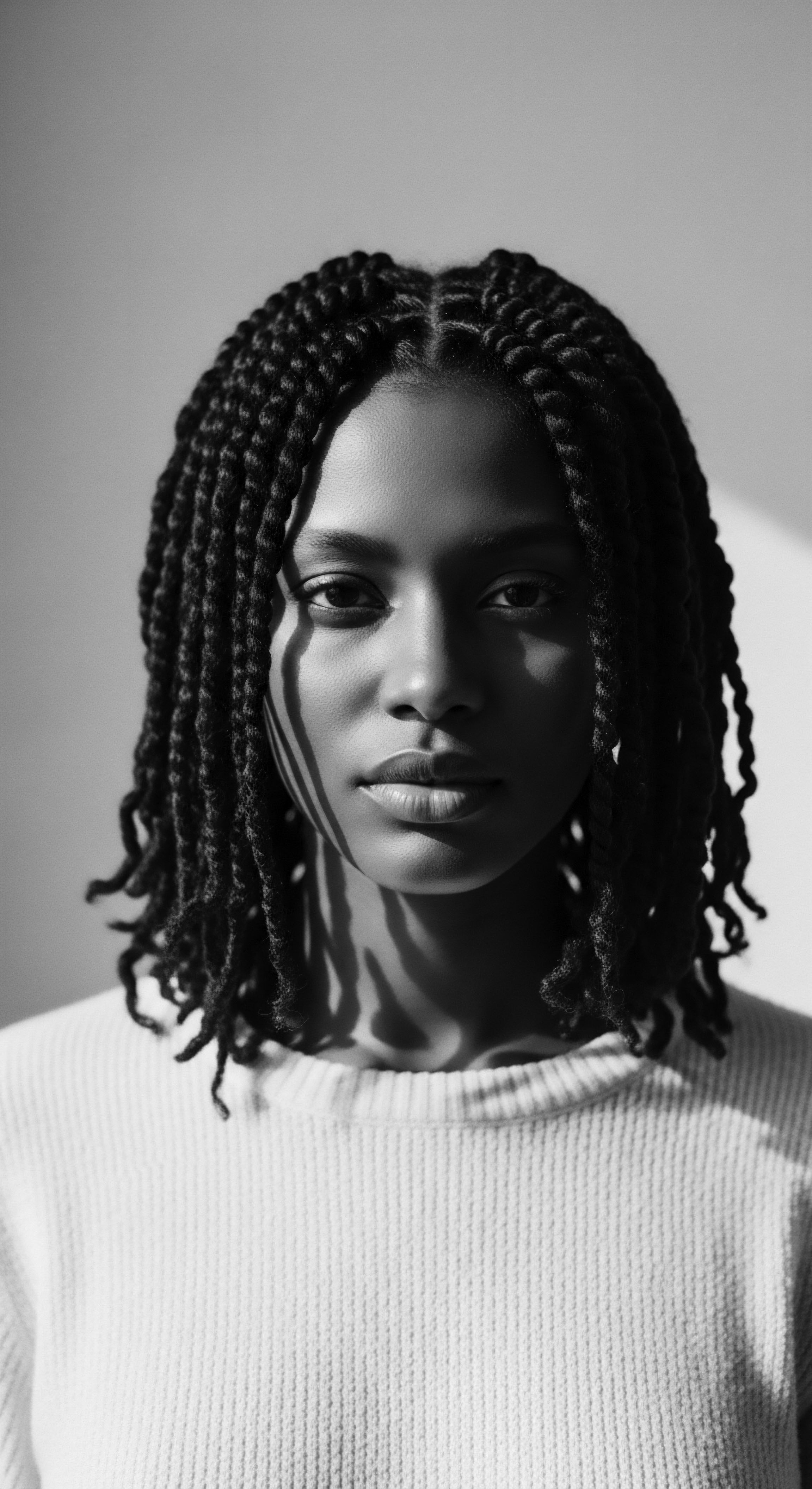
Ethnobotanical and Sociological Delineations
The ethnobotanical dimension of West African Heritage, as applied to hair care, offers fertile ground for academic inquiry. The historical reliance on indigenous plants like chebe powder (from the Croton zambesicus plant, used by the Basara Arab women of Chad) or kinkeliba (Combretum micranthum, a medicinal plant used for hair rinses) speaks to a sophisticated pharmacological knowledge developed over millennia. These botanical resources were not simply used; their preparation often involved complex processes of drying, grinding, infusing, and fermenting, indicating a deep understanding of their chemical properties and efficacy. The communal cultivation and harvesting of these plants also point to an economic and social infrastructure built around traditional hair care, revealing the interconnected incidences of resource management, community labor, and beauty practices.
Sociologically, the act of hair dressing itself was a profound social ritual. It was a context for intergenerational knowledge transfer, where elders imparted wisdom, stories, and cultural values alongside braiding techniques. The intimate physical contact involved in hair styling fostered strong bonds, reinforcing communal ties and mutual support. This communal practice, often occurring in public spaces, served as a powerful mechanism for social cohesion and the transmission of cultural norms.
The long-term consequences of such practices are evident in the enduring communal spirit often found within Black and mixed-race hair care spaces globally, a direct echo of these ancestral gatherings. The very definition of beauty, within this context, was intrinsically linked to health, community, and adherence to cultural tenets, offering a powerful counter-narrative to Eurocentric beauty standards.
The resilience of West African hair traditions in the face of colonial subjugation and the transatlantic slave trade represents a critical area of academic investigation. Despite deliberate attempts to suppress cultural practices and impose alien beauty standards, ancestral hair care rituals persisted, often covertly. This persistence was not merely a stubborn adherence to the past; it was a strategic act of cultural preservation, a means of maintaining identity and dignity amidst profound oppression. The adaptive nature of these practices, their ability to transform and survive across continents, underscores the robust nature of the West African Heritage.
The academic lens reveals how hair became a site of resistance, a canvas for coded communication, and a profound statement of self-determination, even in the most dehumanizing circumstances. This historical context offers valuable insights into the long-term success insights of cultural resilience and the enduring power of ancestral wisdom in shaping human experiences.
- Yoruba Ori Concept ❉ The spiritual significance of the head and hair as the seat of destiny and consciousness.
- Ethnobotanical Wisdom ❉ Traditional knowledge of indigenous plants and their application in hair care.
- Communal Grooming ❉ The social function of hair dressing as a mechanism for knowledge transfer and community bonding.
Furthermore, the academic examination of West African Heritage necessitates an exploration of its global diaspora. The traditions carried by enslaved Africans and subsequent migrants transformed and hybridized, giving rise to new hair expressions and care practices in the Americas, Europe, and beyond. This ongoing evolution demonstrates the dynamic, rather than static, nature of heritage. It challenges simplistic notions of cultural purity, instead revealing a vibrant tapestry of adaptation, innovation, and continuous re-interpretation.
The meaning of West African Heritage, therefore, is not confined to a geographical space but expands to encompass the global journey of Black and mixed-race hair, reflecting a continuous dialogue between ancestral roots and contemporary realities. This scholarly pursuit of its full complexity offers a comprehensive exploration, moving beyond superficial understandings to reveal the profound impact of this heritage on global identity.

Reflection on the Heritage of West African Heritage
As the final whispers of this exploration settle, we are invited to pause and reflect upon the enduring heritage and evolving significance of the West African Heritage within the tender context of textured hair and its vibrant communities. This is not merely an academic exercise; it is a profound meditation on the ‘Soul of a Strand’—a recognition that each curl, each coil, carries within it the echoes of ancient drums, the wisdom of ancestral hands, and the resilience of a people who have continuously redefined beauty and belonging. The threads of history, once distinct, now intertwine, forming a continuous lineage of care, identity, and profound cultural expression.
The journey from the elemental biology of the strand, through the ancient practices of care, to its role in voicing identity across continents, reveals a powerful truth ❉ West African Heritage is not a relic of the past, but a living, breathing inheritance. It manifests in the contemporary reverence for natural ingredients, in the communal joy of hair braiding sessions, and in the quiet strength found when one embraces their authentic texture. The initial designation of this heritage, a clarification born of historical fact, deepens into an intuitive understanding, a sense of belonging that transcends time and space.
In every carefully chosen ingredient, every patiently crafted style, and every shared story of hair, the West African Heritage asserts its timeless presence. It calls us to honor the wisdom of those who came before, to appreciate the profound connection between our physical selves and our ancestral roots, and to recognize that the care of our textured hair is, in itself, an act of cultural preservation and self-affirmation. This legacy, rich with meaning and potent with purpose, continues to shape futures, reminding us that true beauty springs from the deepest wells of identity and the unbroken lineage of heritage.
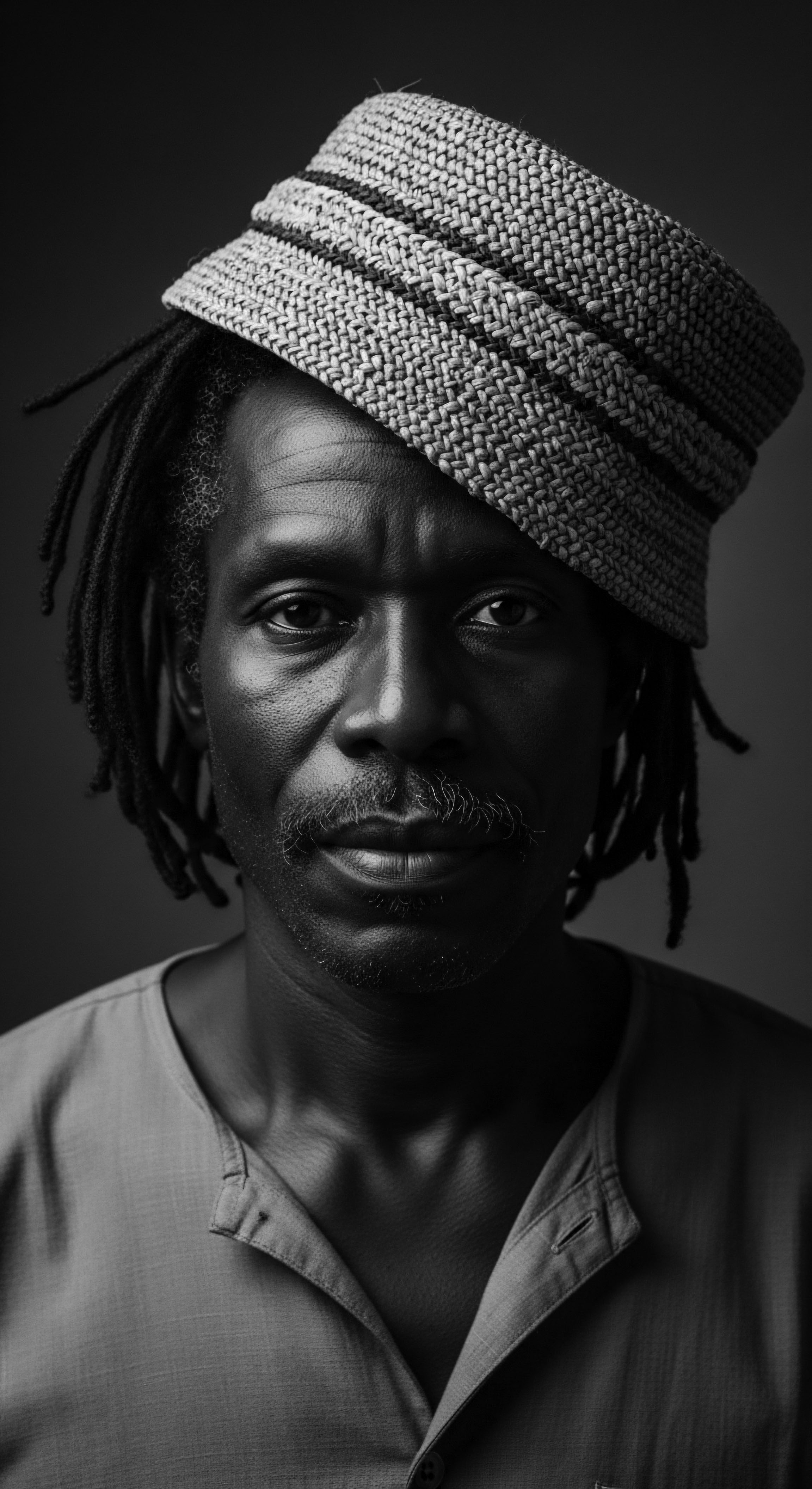
References
- Byrd, A. M. & Tharps, L. D. (2014). Hair Story ❉ Untangling the Roots of Black Hair in America. St. Martin’s Griffin.
- Paulme, D. (1939). Les sculptures Dogon. Journal de la Société des Africanistes, 9(1), 71-85.
- Thompson, R. F. (1971). Black Gods and Kings ❉ Yoruba Art at UCLA. Museum of Ethnic Arts, University of California, Los Angeles.
- Akbar, N. (1998). Light from Ancient Africa. New Mind Productions.
- Kearney, R. (2013). The African-American hair care market ❉ A qualitative study. Journal of Business & Economics Research, 11(3), 101-110.
- Emecheta, B. (1979). The Joys of Motherhood. George Braziller.
- Gale, R. (2007). African-American hair care and styling ❉ A cultural and historical perspective. Milady’s Standard Cosmetology.
- Opoku, K. A. (1978). West African Traditional Religion. FEP International Private Limited.
- Mbiti, J. S. (1969). African Religions and Philosophy. Heinemann.
